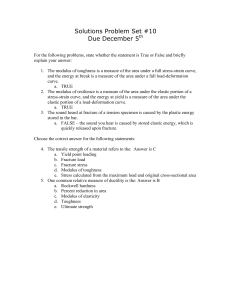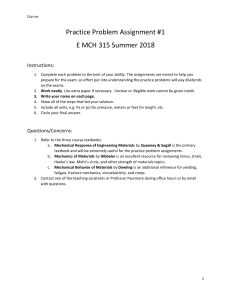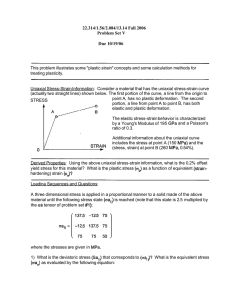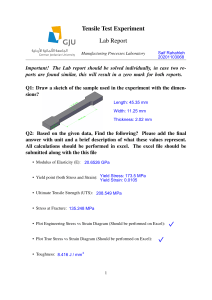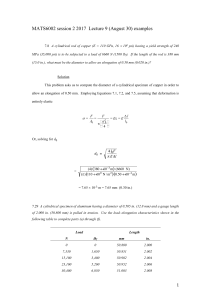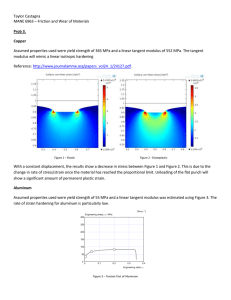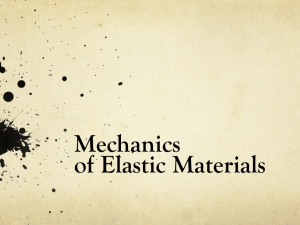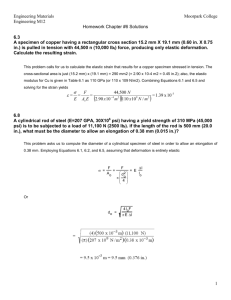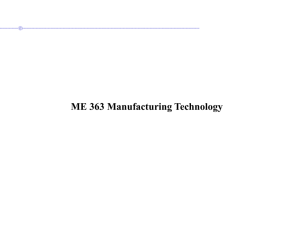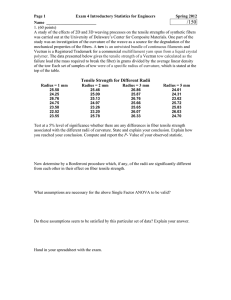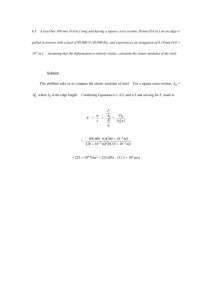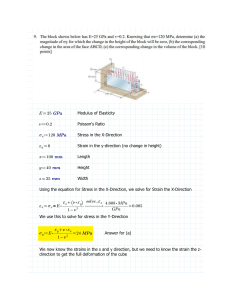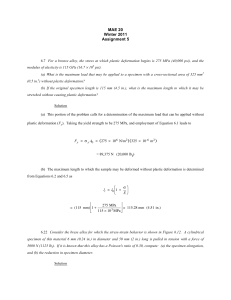problem 6.30
advertisement
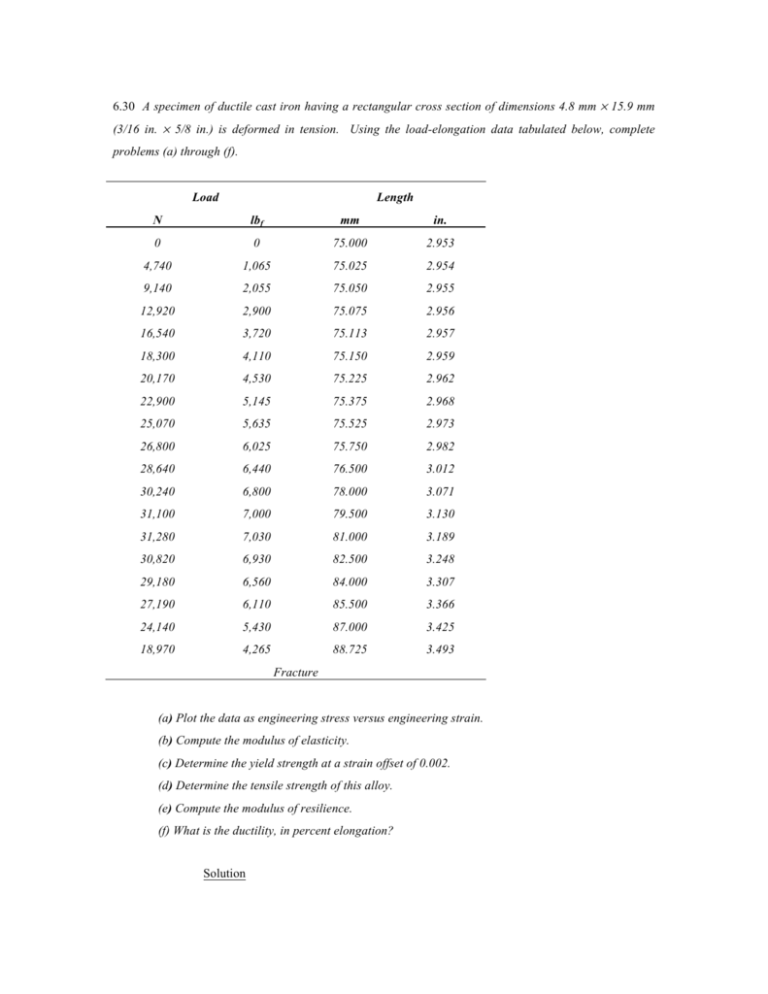
6.30 A specimen of ductile cast iron having a rectangular cross section of dimensions 4.8 mm ! 15.9 mm (3/16 in. ! 5/8 in.) is deformed in tension. Using the load-elongation data tabulated below, complete problems (a) through (f). Load Length N lbf mm in. 0 0 75.000 2.953 4,740 1,065 75.025 2.954 9,140 2,055 75.050 2.955 12,920 2,900 75.075 2.956 16,540 3,720 75.113 2.957 18,300 4,110 75.150 2.959 20,170 4,530 75.225 2.962 22,900 5,145 75.375 2.968 25,070 5,635 75.525 2.973 26,800 6,025 75.750 2.982 28,640 6,440 76.500 3.012 30,240 6,800 78.000 3.071 31,100 7,000 79.500 3.130 31,280 7,030 81.000 3.189 30,820 6,930 82.500 3.248 29,180 6,560 84.000 3.307 27,190 6,110 85.500 3.366 24,140 5,430 87.000 3.425 18,970 4,265 88.725 3.493 Fracture (a) Plot the data as engineering stress versus engineering strain. (b) Compute the modulus of elasticity. (c) Determine the yield strength at a strain offset of 0.002. (d) Determine the tensile strength of this alloy. (e) Compute the modulus of resilience. (f) What is the ductility, in percent elongation? Solution This problem calls for us to make a stress-strain plot for a ductile cast iron, given its tensile loadlength data, and then to determine some of its mechanical characteristics. (a) The data are plotted below on two plots: the first corresponds to the entire stress-strain curve, while for the second, the curve extends just beyond the elastic region of deformation. (b) The elastic modulus is the slope in the linear elastic region (Equation 6.10) as E = ! " 100 MPa $ 0 MPa = = 200 % 10 3 MPa = 200 GPa !# 0.0005 $ 0 (29 % 10 6 psi) (c) For the yield strength, the 0.002 strain offset line is drawn dashed. It intersects the stressstrain curve at approximately 280 MPa (40,500 psi). (d) The tensile strength is approximately 410 MPa (59,500 psi), corresponding to the maximum stress on the complete stress-strain plot. (e) From Equation 6.14, the modulus of resilience is just Ur = ! 2y 2E which, using data computed above, yields a value of Ur = (280 ! 10 6 N / m2 ) 2 (2) (200 ! 10 9 N / m2 ) = 1.96 ! 10 5 J/m3 (28.3 in.- lb f /in.3) (f) The ductility, in percent elongation, is just the plastic strain at fracture, multiplied by onehundred. The total fracture strain at fracture is 0.185; subtracting out the elastic strain (which is about 0.001) leaves a plastic strain of 0.184. Thus, the ductility is about 18.4%EL.

